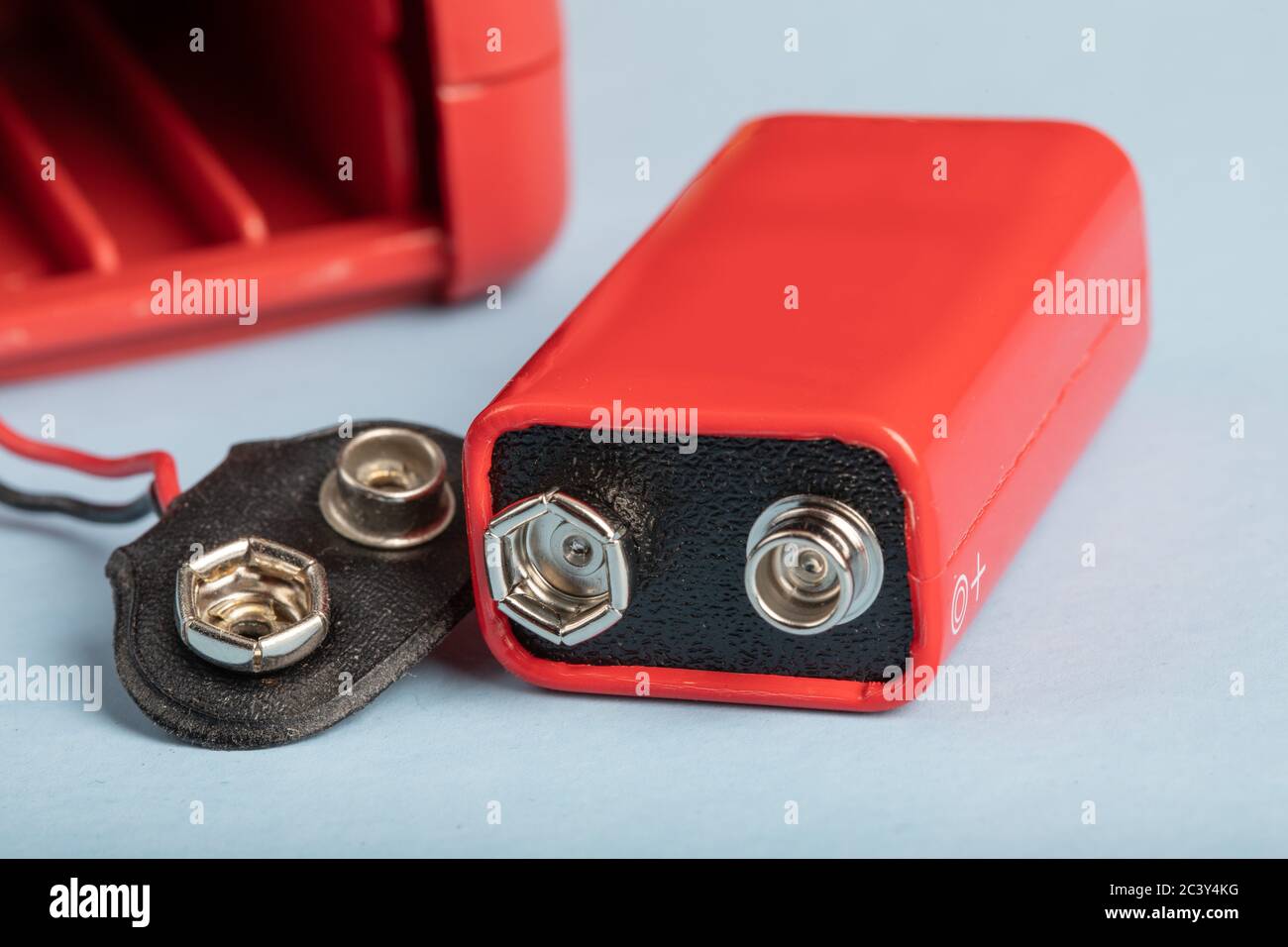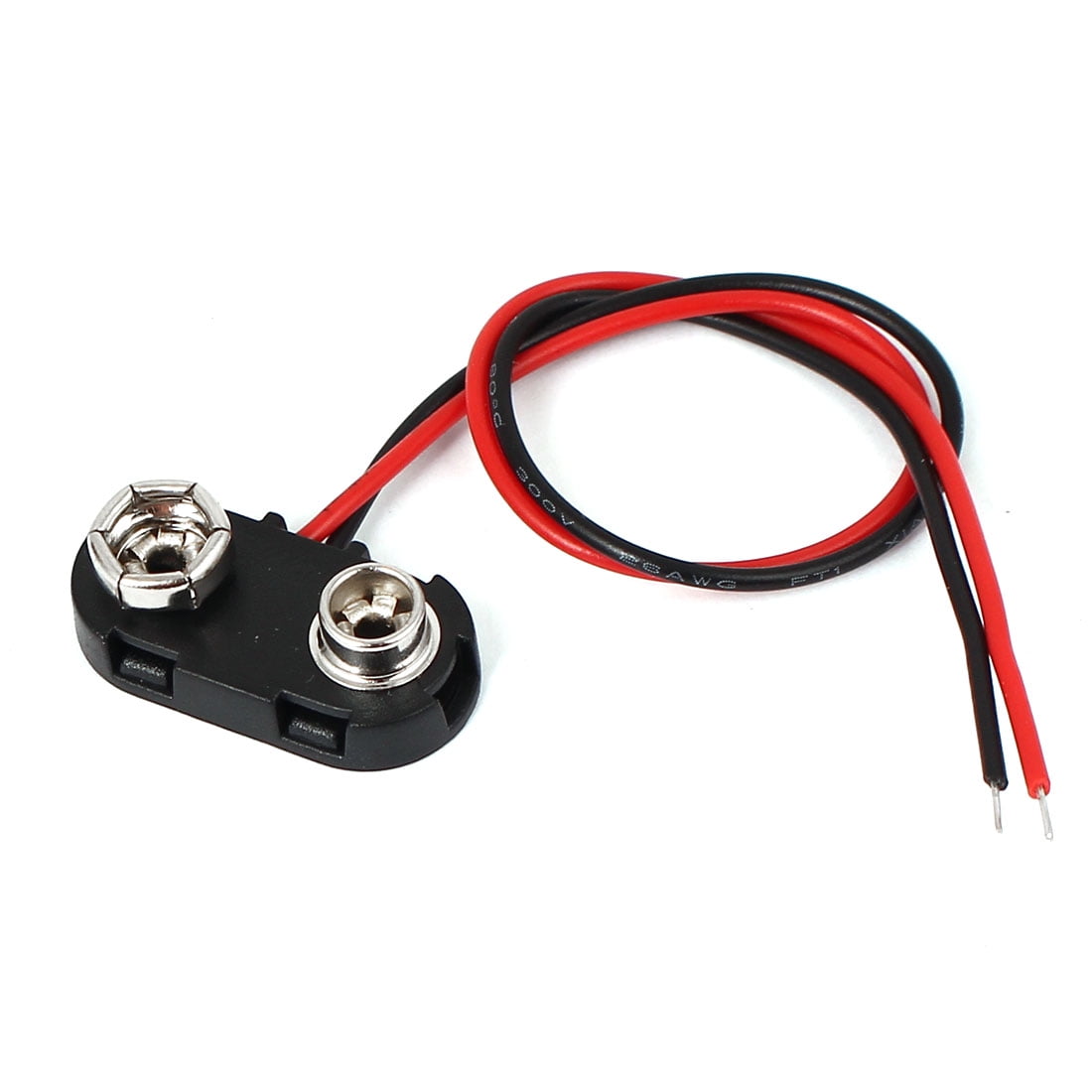

Now you're done and ready to start saving money. The black plastic you saved can be hot glued to the back, making a really neat and strong 9 Volt battery clip. Red/Positive to the rounded connector and the Black/Negative to the bigger hexagonal connector. You solder the remaining 2 wires to the clip you just recycled from the old battery. We took off the metal and cardboard which were joined to the connector. We discarded most of the battery, but kept the connector and the plastic base. 20 Pcs Battery Snap Connector 9v Volt Clip On Type Lead Wire. Using gloves and a newspaper to avoid any nasty chemicals. Battery Snap Clip Snap On Connector Cable Lead 6.5/10/15cm 9 Volt Battery Holder. We used pliers to take off the metal casing of an old 9 Volt battery. You can see the bag it came from.īe sure to slide the heat shrink on before you solder! The Home Made 9 Volt Clip #Īll that remains is to connect your 9 Volt clip, which you can buy but it's more fun and interesting to make one. The yellow sheath is the heat shrink we use to insulate the join. In the photo below we have the red and black wires cut and stripped ready to solder together.

The remaining black/negative from the 2nd pack is your negative out.The black/negative from 1st pack connects to the red from the 2nd pack.You need to connect the red/positive from the 1st pack to positive out.
#Nine volt battery connector series
In series we expected 6.2 volts and this is what we got. (You would expect double the battery life with them in parallel delivering 3.1V) We hooked up a multimeter and connected our 2 holders in parallel just for fun and got 3.1 Volts but we want 6 Volts so connected them in series. You can make your own or 3D print them but they are very cheap to buy. There are a variety of other options, you can get holders that take 1, 2, 3, 4, or 6 batteries. We used 2 AA battery holders back to back which gave us a similar shape to the 9Volt battery space in our mini Amp. We were hoping the power supply we're about to make (made up of AA batteries) would last longer that the 9V since the overall volume was larger - so far, the one we have created is yet to need a replacement battery! Connecting Your AA Batteries # If you wanted 9 Volts, then you have the option of including an extra 2 batteries in your project. So, we decided to use 4 of these 1.5V AA batteries (with a total 6V) to replace the expensive 9V battery. We realised we could buy over 30 cheap 1.5 Volt AA batteries for less than the price of just one 9 Volt battery. You can pick up 9V battery clips cheaply, but we up-cycled one from an old battery which turned out better than a bought one. We got a 32 pack of 1.5 Volt AA Batteries for only £2 (from PoundLand) - compared with the Duracell 9 Volt Battery that cost £7, this is going to be a lot cheaper no matter how the project turns out.

Buy/Make 2 (stranded-wire) jumper wires with boot-insulated alligator clips on each end (i.e. Strip (1/2") all ends of 2 insulated (1"L x 20 AWG) solid copper wires & insert them into your breadboard power rails.ģ. Strip (1/2") the ends of your battery clip leads & tin them with solder.Ģ. Do the following inexpensive & simple steps to solve your problem:ġ.


 0 kommentar(er)
0 kommentar(er)
